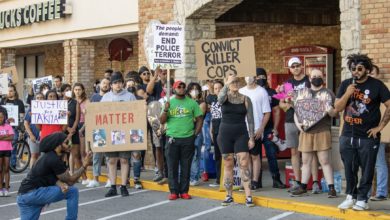
Investigative journalists working for Al Jazeera and the local newspaper Beachcomber, exposed the Long Beach Police Department’s use of “Tiger Text,” a messaging app designed to delete texts after a few days, and to ensure that once deleted, the messages are irretrievable by any subsequent examination of the phone. According to a statement of the city government, the app was installed on 145 of the 291 city issued cell phones used by the LBPD. The department claims that this was for the purpose of protecting confidential information, but reports from two inside sources confirm that it was explicitly intended to be used to “have conversations with other officers that wouldn’t be discoverable.”
Long Beach is not an especially violent city. Despite this, the Long Beach Police Department is notorious as fifth highest in the U.S. for police shootings per capita, according to a 2015 study. There is seemingly no incident too trivial to end in a killing, from sitting in a yard as in the case of Douglas Zerby, to suspected fare evasion on the Metro Blue Line, as in the case of Cesar Rodriguez who crushed by a train while being chased by LBPD. It is clear to see that this, not any supposed fears of the privacy of victims or suspects, is the driving force behind the department’s use of the app.
Indeed, according to Al Jazeera, the officers whose statements were quoted “understood this to include exculpatory evidence that could be potentially helpful to attorneys in both civil and criminal proceedings against the department.” Another officer was quoted as saying, “I find it odd that we have a communication system that circumvents everything that we are supposed to be doing, [but] nothing surprises me working there.”
Police mission statements at odds with true mission
It should not come as a surprise that the LBPD, or any U.S. police department, falls short of its stated purposes, principles, and best practices. This is not a failure on their part, but simply an indication that their actual principles, purposes, and practices have nothing to do with what they claim for public relations reasons. This department, like so many others, trumpets its commitment to accountability. However Chief Robert Luna recently claimed at a City Council meeting on the budget that LBPD cannot even afford body cameras. Somehow they were able to afford adding many new officers to the force, not yo mention the TigerText app for the past four years. The department will gladly pay for illegal means of evading accountability while abandoning even token gestures toward accountability as unaffordable.
Impunity despite body cameras
This is not to say that body cameras would guarantee accountability. In fact, recent incidents and the actions of LBPD seem to demonstrate a pattern of evading accountability despite the availability of body cameras. In July 2017 the police came under fire for shooting and wounding a man as he ran away because he allegedly reached for his waistband but none of this was captured in police body camera footage because the officers had deliberately chosen to remove their cameras due to alleged technical issues.
While claiming that widespread problems exist with the body cameras, the police have continuously refused to provide any information to the Press-Telegram when it made public record requests to obtain communications between LBPD and the body camera vendor that would indicate any attempt to resolve alleged technical issues or shed light on the content of the technical issues LBPD was experiencing.
Liberation News spoke with local journalist Jeremiah Dobruck, author of the March article describing these requests. He said there was “still nothing. I’ve pushed them a few times. They say there’s a backlog of records they’re compiling and redacting related to this. Not sure how much I buy that, but that’s what they say.”
In January the department claimed that 90 percent of issues related to their body camera program were resolved. In spite of this, the case of 21-year-old Anthony Mariscal demonstrates why the community of Long Beach has deep distrust of the local police. In March, two LBPD police officers pulled over a car full of people heading to a vigil for a friend who had recently committed suicide. The police fired on the car full of people and wounded Mariscal, claiming someone in the car pointed a gun at them. The problem with this story is that the car was tinted black according to Mariscal’s mother Alicia Reyes, and that the police would, “have to have magical eyes to be able to see what was in the back seat of that car.”
Only one officer involved in the incident was wearing a body camera and the footage obtained was such poor quality image that it was useless as evidence. Reyes further mentioned that the police knew Anthony Mariscal and his brother well from previous arrests and that they had shown up intermittently to their home in the months leading up to the incident. A neighbor informed Reyes that police had even been waiting outside the home prior to Mariscal and his brother leaving for the vigil that night. Given their regular harassment of Mariscal and his brother, is it a stretch to imagine LBPD seeking to undermine body camera footage? Would anyone in Long Beach feel safe when pulled over knowing that the cops can fire blindly into their car with impunity?
How much evidence has been lost due to Tiger Text?
There is no way of knowing what potentially crucial evidence the department may have concealed, that has now been lost, denied to victims of police brutality, to defendants now in prison, or to the families of the dead as a result of their illegal use of Tiger Text.
Was Tiger Text used when discussing the murder of Barry Prak by LBPD in 2016? Barry was a prominent figure in the movement against LBPD to demand justice for his friend Sokha Hor, who was nearly killed by LBPD in 2013. Sokha’s case demonstrated the depravity of LBPD as they refused to allow Sokha’s family to even visit him in the Intensive Care Unit until a well publicized protest at St. Mary’s Medical Center, led in part by Prak, forced them to allow family visits. Given Prak’s outspoken role in challenging LBPD violence in the case of his friend Sokha there is every reason to view any LBPD communications around this case with utmost suspicion.
Did the officers who gunned down unarmed Hector Morejon for graffiti first get their stories straight using the Tiger Text app? Or did the command of LBPD work out how they would present the case of Feras Morad, a 20-year-old CSULB student in a medical crisis who was gunned down on sight, through Tiger Text? The track record of LBPD would suggest that there is critical evidence missing in all of these cases and many more lesser known incidents.
Even more damning is who exactly had access to the Tiger Text app because it indicates the possibility of a concerted effort to prevent police accountability. Of the 145 phones with the app installed, the majority belonged to LBPD command, homicide investigators, and internal affairs investigators. This means that all the cops involved in the public presentation of police shooting incidents, those who investigate such murders and other internal investigators of crimes by the police had access to Tiger Text and the potential to communicate in secret among themselves in every case from at least 2014 until today.
Mohammad Tajsar, an attorney with Southern California ACLU, underscored the breadth of this cover-up, “If the department brass instructed members of the force to use Tiger Text to shield from the public the disclosure of sensitive messages about investigations into police killings, then this is an institutional cover-up of the highest order, designed to protect a department that is notorious for killing people.”
But Luna defended the officers’ rights to withhold this information by comparing the likely tens of thousands of messages across four years to police officers’ post-it notes. He said LBPD officers “put the relevant stuff that you believe has something to do with the case in the report and the rest of it is going to get discarded. We do that all the time.”
Luna then went on to show an example of such a Tiger Text message sent by LBPD Commander Michael Lewis to fellow when police arrived on scene in the Belmont Shore neighborhood and proceeded to taser a man to death who was badly injured and experiencing a medical crisis.
The message contained information related to the victim of police violence and an apparent search of his home. Chief Luna tried to present himself as being unaware that deleting such messages are a violation and downplayed the significance. However, as soon as the scandal broke the department immediately ceased using the app.
Former Chief Jim McDonnell, and current head of Los Angeles Sheriffs Department, was the one who initiated use of the app in 2014, but this does not excuse Luna who continued using the app and encouraged its use. City Attorney Charles Parkin, who was serving in 2014, claims to have never heard of police use of the app until the release of the Al-Jazeera story and stated that he would never have approved of such a messaging system. Clearly too much trust has been placed by the City in LBPD if they are not even aware of what legal violations the department is making. Lack of knowledge is no excuse for the City’s role in allowing this type of abuse to carry on.
Given the scale of this abuse by LBPD we must demand the reevaluation of convictions from 2014 onward, the reevaluation of all cases of police murder and misconduct, and the immediate removal of Luna for his role in overseeing this operation. We must continue to demand justice for the countless victims of not only shocking murders, but the constant abuse, harassment, and intimidation meted out by the LBPD to the working and oppressed people of Long Beach.






